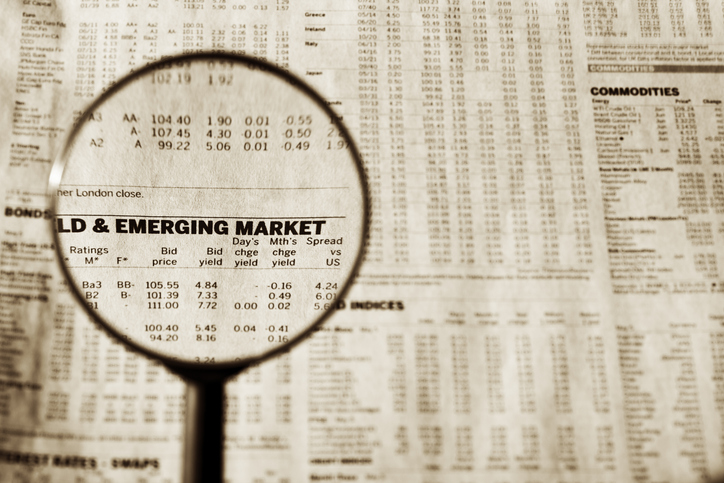Stocks and credit rose last week as investors continue to bet that the worst is behind is when it comes to Trump’s tariffs.
Now that the worst fears about the impact on US growth and employment from Trump’s tariff seems to have dissipated somewhat, we now turn to the inflationary side. This week’s May US inflation report on Wednesday is critical. Economists are expecting a modest rebound in the core subindex on the back of import price hikes, but uncertainty is very high given the lack of historical precedent. Beyond the US, we have a busy week in the UK, with labour market data on Tuesday and Wednesday, bookended by April monthly GDP on Thursday. A spate of speeches by ECB officials should add light to the apparent hawkish turn of the institution at its June meeting.

Loupe focusing on text on financial newspaper
GBP
Sterling continues to grind upwards against both the dollar and the euro. Last week’s positive revisions to the May PMI business sentiment data validates the Bank of England hawkishness, which has pushed any prospect of a cut to Autumn at the earliest. There remains a divide on the likely path ahead for rates among committee members, yet most appear in the hawkish camp, with Governor Bailey stressing again last week that the bank would adopt a “careful and gradual” approach to cuts.
This week’s labour data is expected to show wages growing above 5% again, enough to support consumption in spite of elevated inflation. The UK exemption from massive US tariffs on steel and aluminum, and the thawing in Britain’s relationship with the European Union, both confirm that the country is relatively well placed to weather the realignment of global trade and we remain bullish on the pound.
EUR
The ECB surprised markets somewhat when President Lagarde said last week that the cutting cycle is close to coming to an end. It is true that with rates at 2% and inflation at or above that level the room for additional cuts seems tight, but nevertheless the ECB’s bluntness caught investors off guard, and the euro was able to post modest advances.
Real economic data seems to be holding up well in the Eurozone, but it is lagged and tariff-related distortions that probably account for much of the relative strength seen in first-quarter GDP data and German exports. This week should be a quiet one for the euro, with only second-tier data and ECB official speeches on tap. Market participants will also be keeping tabs on this week’s US-China trade discussions.
USD
The tentative run of weak US data ended on Friday with a fairly solid, albeit rather mixed May payrolls report. While there were some downward revisions totalling almost 100k over the previous couple of months, the overall picture was in line with what we had seen in the US labour market for some months now: solid, albeit slowing job creation and little hint of sustained layoffs. The upward surprise in wages added to the sense that the Federal Reserve can afford to sit and wait, and in fact markets no longer price in any cuts before September.
The US Treasury market has stabilized after a brutal few weeks, but it remains vulnerable to any shocks. An upward surprise in this week’s inflation report may be one such shock. We will also be keeping very close tabs on the next round of trade talks between US and Chinese officials, set to take place in London this afternoon. Investors will be hoping that last week’s “very good” phone call between Trump and Xi paves the way for compromise, the finding of some common ground and an agreement that ultimately leads to the implementation of lower tariff rates.